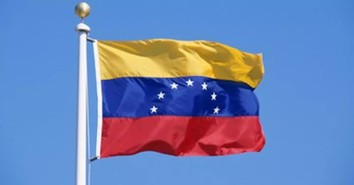Why Is "In God We Trust" on US Money?

In God We Trust is a phrase that we regularly see on our change and bills, while also gracing several of our car license plates, our government buildings, and even as tattoos on people’s bodies. Despite efforts to remove In God We Trust from several places, the faith-based motto has stayed in our lives for centuries. This is because it has a background that goes far beyond being a novelty logo or recognized as part of our currency. It came into existence thanks to some strong Christians who felt a nation going through a painful, costly war needed a constant reminder about God and His provision, and this should be something we take note of every day. It even went into law, becoming an intricate part of our nation’s history for life.
"In God We Trust" Was Approved by Congress in 1864
As many may recall, from 1861 to 1865, the United States was in the midst of a terrible inner war among its people called the Civil War, pitting the North against the South. It still is the one war in our history that sustained the most casualties, 620,000 deaths to be exact. So, it was evident that the nation’s division left many in need of hope and reassurance that God was there with them. On November 13, 1861, Secretary of Treasury Salmon P. Chase began receiving petitions from several people of faith around the United States who wanted to put God’s name on the nation’s currency.
The first letter was sent by Rev. M.R. Watkinson, Minister of the Gospel, from Ridleyville, Pennsylvania. Rev. Watkinson mentioned, in his letter, for the words God, Liberty, and Law to be somewhere in the currency, as he felt God’s protection needed to be recognized during this difficult time for the nation. Mottos had always been on United States coins and currency due to an act by Congress signed on January 18, 1837, which stated also that legislation had to be done if a request was made to change those mottos.
Secretary Chase felt that Rev. Watkinson’s request wasn’t too much to ask and contacted the director of the mint, James Pollock, in Philadelphia to create a motto with this sentiment in mind, stating this in a letter sent to Pollock on November 20, 1861. By December 1863, Pollock sent designs to Secretary Chase for the coins (one-cent, two-cent, and three-cent) with the options of Our Country, Our God and Our God, Our Trust. Secretary Chase replied back approving the designs and adding the suggestion of rephrasing it to In God We Trust.
The name then had to be approved by Congress, which it was in the Act of April 22, 1864, which allowed the design change for the one-cent coin and minting of the two-cent coin. The first display of In God We Trust was on the two-cent coin in 1864. Fast forward almost a year later and another act by Congress was passed on March 3, 1865 with the motto being inscribed on all silver and gold coins. It appeared on the gold half-eagle coin, the gold eagle coin, the gold double-eagle coin, the silver dollar coin, quarter dollar coin, half dollar coin, and, in 1866, the three-cent nickel coin.
The Coinage Act of 1873, signed on February 12, 1873, stated that In God We Trust was to be on all coins, if there was room for the motto to fit.
A Brief Disappearance, with a Valiant Return
Although In God We Trust hasn’t been entirely removed from currency since the Coinage Act of 1873, it was removed for a time, beginning in 1883, from the five-cent coin and made a return appearance in 1938 on the Jefferson nickel. All coins made in the United States have displayed the motto since 1938.
July 30, 1956 marked when Congress and then-President Dwight D. Eisenhower approved In God We Trust to become the American nation’s motto, a year after it was authorized and signed to be on all paper money and coinage through the Public Law 140 (July 11, 1955). It began showing up on money starting in 1957, appearing first on the one-dollar bill.
The state of Florida adopted In God We Trust as part of its state seal by the Florida legislature in 1868. The first motto in Florida was “In God is our Trust,” but it officially became In God We Trust as part of the state seal in 2006.
What Are the Origins of "In God We Trust"?
If you are wondering where the actual terminology of In God We Trust came from, we need only look as far as our National Anthem, written by Francis Scott Key in 1814. As part of the original version of Key’s anthem, this stanza was included at the song’s end:
“And this be our motto: In God is our trust. And the Star-Spangled Banner in triumph shall wave, O’er the land of the free and the home of the brave.”
The recognition in the National Anthem, as well as using the motto on American currency, is in part due to what the United States were founded on: a relationship with God and living out Christian principles that governed not just our individual lives, but how we handle our communities, jobs, and interactions with other nations/countries. Those that came over from England to settle in North America did so to escape persecution from a corrupt church and that pursuit of religious freedom is still guaranteed from the First Amendment of the Constitution.
What Does the History of "In God We Trust" Teach Us?
So, how does knowing the origins of In God We Trust impact our lives today? If anything, those that pushed for the motto to be on our money knew that whether we were in peaceful times or in a war, God’s protection and love was always going to be needed by people. The book of Proverbs, in Proverbs 3:5-6, celebrates this trust in God by encouraging believers to trust more in God instead of their own understanding, as He knows best how to direct their paths. Psalm 118:8 also brings attention to the benefits of trusting in the Lord, both for the present and eternally:
“Better to trust the Lord than put confidence in man.”
Considering that money is what a lot of people put their trust in, the fact that In God We Trust is on it is a reminder that God is truly the only one to trust with everything precious to you. The fact, also, that the phrase continues to remain as the nation’s motto and can be found among several governmental buildings means that despite the distance some people may feel God is to them, He still is present and still is a foundation of our lives.
Though He can’t be physically seen, heard, or touched, at times, God’s love and provision remain with us, and there is evidence in your wallet to prove it!
Blair Parke is a freelance writer for BibleStudyTools.com and editor for Xulon Press. A graduate of Stetson University with a Bachelor's in Communications, Blair previously worked as a writer/editor for several local magazines in the Central Florida area, including Celebration Independent and Lake Magazine in Leesburg, Florida and currently freelances for the Southwest Orlando Bulletin.
Photo credit: ©GettyImages/filipfoto
Originally published October 23, 2019.







